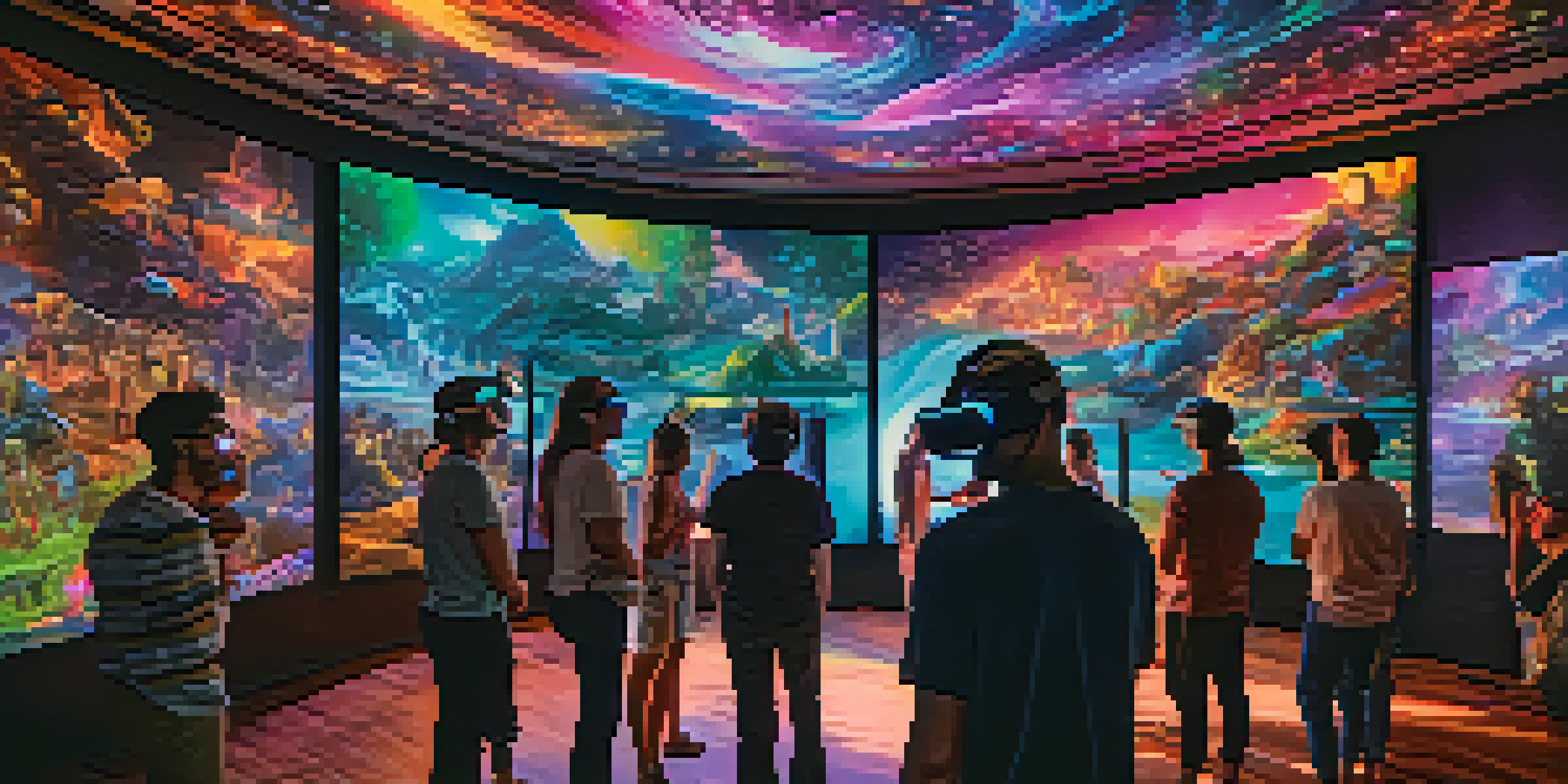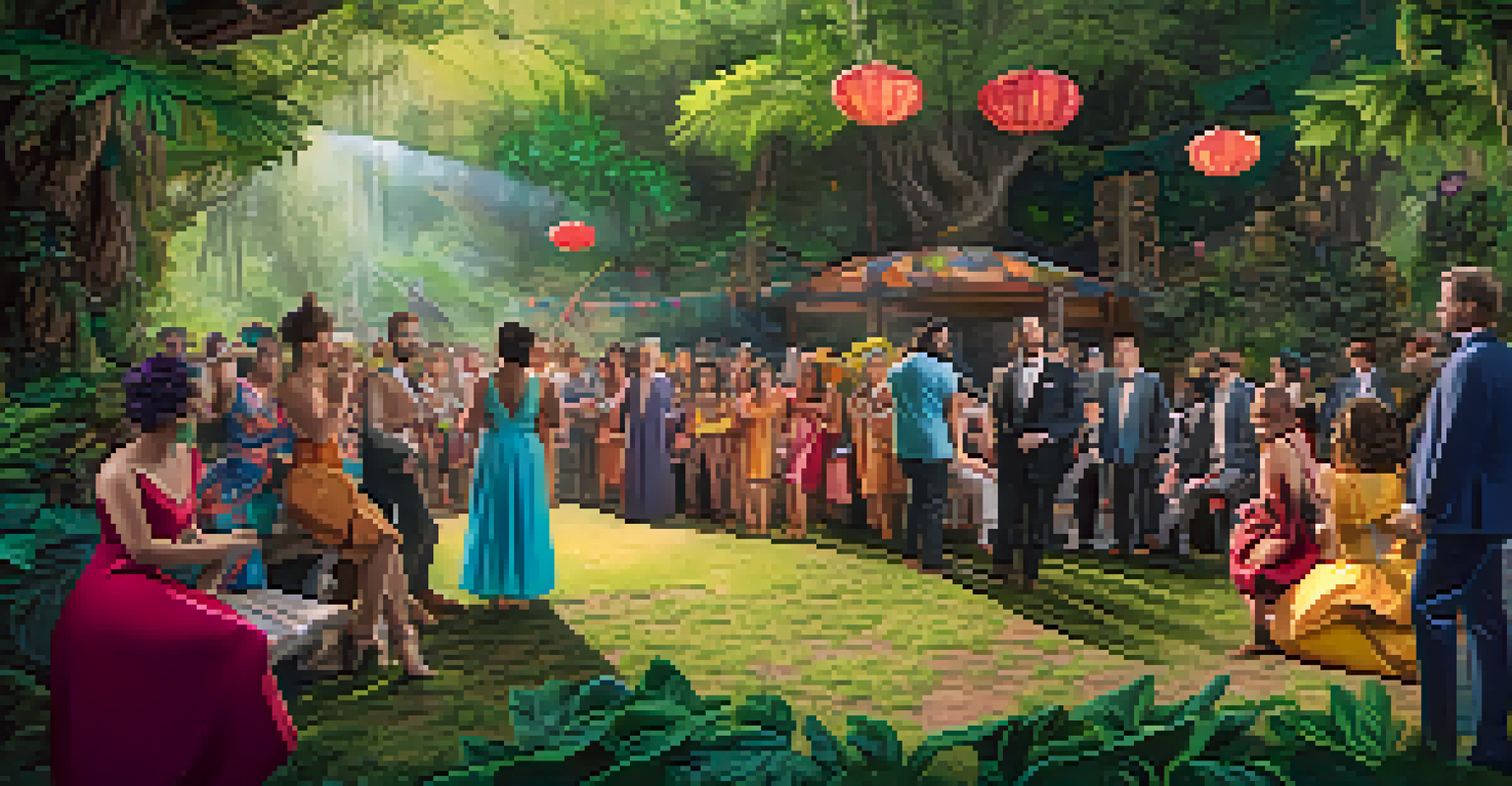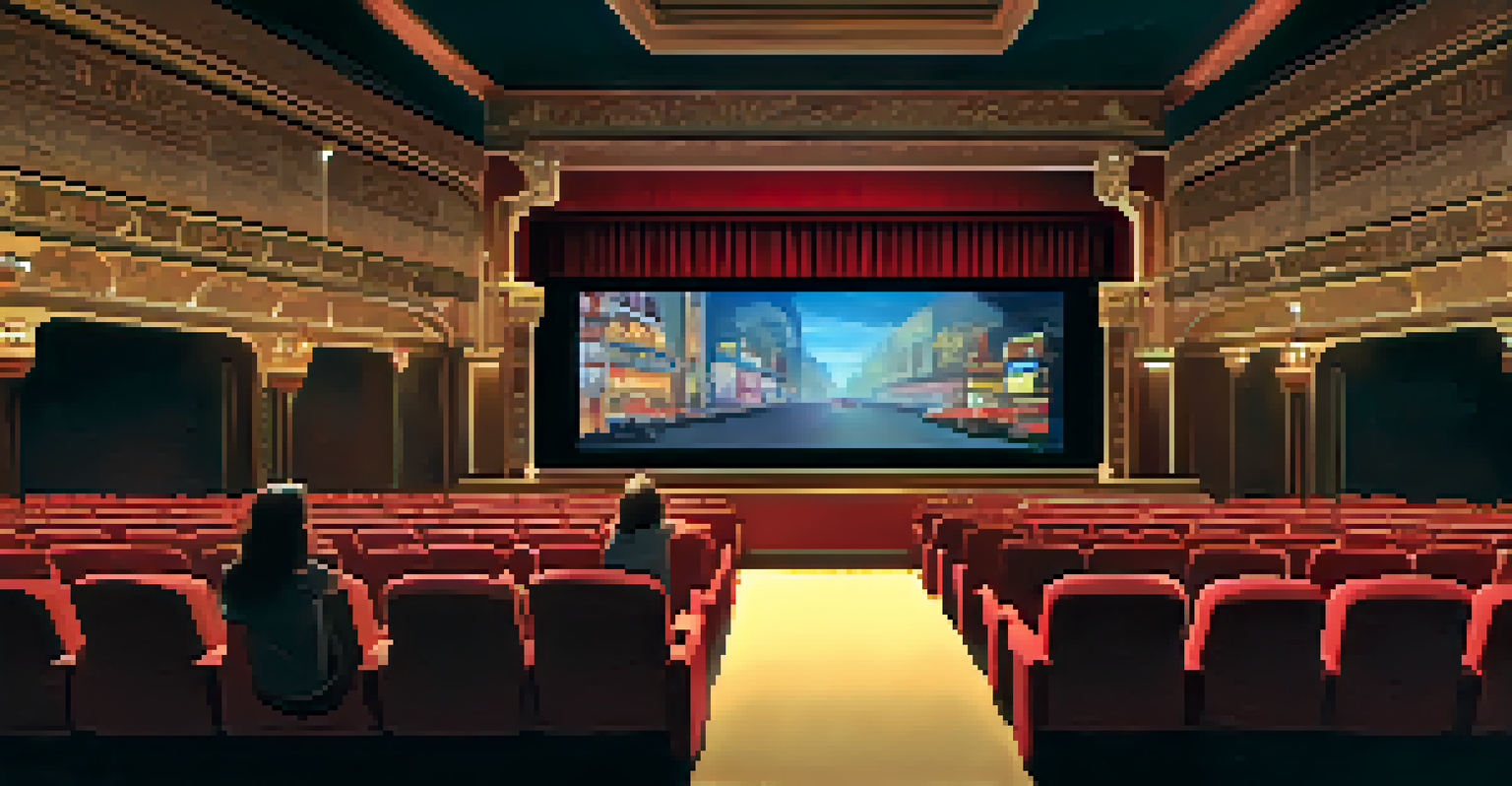Exploring the Evolution of Immersive Cinema Experiences Today

The Origins of Immersive Cinema Experiences
Immersive cinema didn't just pop up overnight; it has deep roots in film history. Early experiments, like the use of 3D glasses in the 1950s, set the stage for more engaging viewer experiences. These innovations aimed to pull audiences deeper into the narrative, offering them a taste of what was to come.
Cinema is a matter of what's in the frame and what's out.
As technology progressed, filmmakers began exploring new formats that challenged traditional storytelling. The introduction of IMAX in the 1970s marked a significant turning point, providing larger-than-life visuals that captivated audiences. This era saw the first real steps towards creating a fully immersive environment, where viewers felt like they were part of the action.
These early developments laid the groundwork for what we now recognize as immersive cinema. With each leap in technology, filmmakers were inspired to push the boundaries of how stories could be told, leading to a more interactive and engaging experience for viewers.
Technological Advancements Shaping Immersive Cinema
Today, technology plays a pivotal role in the evolution of immersive cinema. The advent of virtual reality (VR) and augmented reality (AR) has transformed how films are made and consumed, allowing audiences to step into the story. Imagine watching a film where you can look around and interact with the environment; that's the magic of VR.

Moreover, advancements in sound technology have also enhanced the immersive experience. Dolby Atmos, for example, creates a three-dimensional sound environment, making viewers feel like they are inside the film. This multisensory approach elevates storytelling by engaging not just sight but also sound, creating a more profound connection to the narrative.
Evolution of Immersive Cinema
Immersive cinema has deep historical roots, evolving from early 3D experiments to today's advanced technologies like VR and AR.
As filmmakers continue to experiment with these technologies, the possibilities seem endless. Each innovation offers new ways to engage and immerse audiences, making the cinematic experience richer and more memorable.
The Rise of Interactive Storytelling in Cinema
Interactive storytelling has emerged as a game-changer in immersive cinema. Unlike traditional films, where viewers passively watch, interactive experiences invite them to make choices that influence the storyline. This shift allows audiences to become active participants, altering the narrative based on their decisions.
The future of cinema is not about the traditional screen but about creating immersive experiences that engage and captivate audiences.
One prime example of this trend is Netflix's 'Black Mirror: Bandersnatch,' where viewers choose the character's actions, leading to multiple endings. This innovative approach not only enhances engagement but also encourages viewers to return for a different experience. It exemplifies how storytelling can evolve, offering various pathways and outcomes.
As audiences crave more personalized experiences, interactive storytelling is likely to become more prevalent. It presents a fresh way to connect with narratives, turning the act of watching a film into a collaborative adventure.
The Impact of Social Media on Immersive Cinema
Social media has significantly influenced the way immersive cinema is marketed and experienced. Platforms like Instagram and TikTok allow filmmakers to share snippets of their work, generating buzz and excitement before a film's release. This instant access to content helps audiences feel more connected to the film even before they see it.
Moreover, social media encourages conversations around films, giving viewers a platform to share their experiences and interpretations. Hashtags and challenges related to immersive films can create a sense of community among fans, fostering deeper engagement with the content. It’s a modern twist on film fandom that enhances the overall experience.
Interactive Storytelling's Rise
Interactive storytelling allows audiences to make choices that influence narratives, creating a more engaging and personalized viewing experience.
As filmmakers tap into these platforms, the relationship between cinema and its audience continues to evolve. The dialogue sparked by social media not only enriches the viewing experience but also shapes future cinematic innovations.
Immersive Experiences Beyond the Screen
The concept of immersive cinema extends beyond traditional film screenings. Today, filmmakers are exploring ways to integrate live events, installations, and even themed experiences that transport audiences into the film's universe. These initiatives blur the lines between cinema and reality, creating unforgettable memories for attendees.
For instance, immersive theater productions allow audiences to walk through a story, interacting with actors and the environment. Films like 'The Lion King' have inspired immersive experiences where fans can enjoy music, dance, and interact with the story in real-time. This approach enhances engagement and invites participants to become part of the narrative.
By expanding cinema into physical spaces, creators are redefining how we experience stories. These immersive experiences create lasting impressions, making cinema not just a form of entertainment but a shared journey.
Challenges Facing Immersive Cinema Today
While immersive cinema offers exciting possibilities, it also faces unique challenges. One major hurdle is the cost of production, as creating high-quality immersive experiences often requires significant financial investment. This can limit access for independent filmmakers who want to explore this innovative storytelling approach.
Additionally, audience accessibility is a concern. Not everyone has access to VR equipment or immersive theaters, which can create a divide in the cinematic experience. Filmmakers must consider how to make immersive content available to a broader audience while maintaining quality and engagement.
Social Media's Role in Cinema
Social media enhances the immersive cinema experience by connecting audiences pre- and post-viewing, fostering discussions and community engagement.
These challenges highlight the need for collaboration and innovation within the industry. As filmmakers and technology developers work together, they can find solutions that allow immersive cinema to thrive and reach diverse audiences.
The Future of Immersive Cinema Experiences
Looking ahead, the future of immersive cinema is filled with potential and excitement. As technology continues to advance, we can expect even more groundbreaking developments in storytelling. With AI and machine learning becoming more prevalent, filmmakers may create adaptive narratives that respond to audience preferences in real-time.
Moreover, as audiences become more accustomed to immersive experiences, they will likely demand more innovative content. This shift could lead to an explosion of creative storytelling methods, making each film a unique adventure. The challenge will be to balance these innovations with compelling narratives that resonate with viewers.

Ultimately, the future of immersive cinema lies in its ability to evolve alongside audience expectations and technological advancements. By embracing these changes, filmmakers can create truly transformative experiences that redefine how we engage with stories.